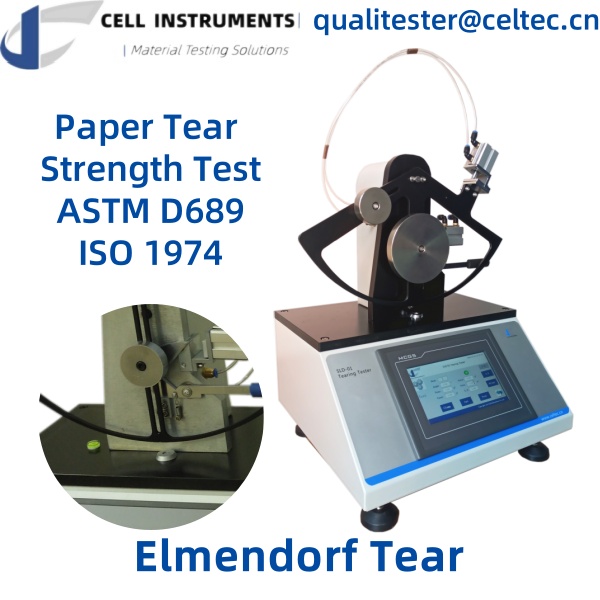Introduction to Elmendorf Tear Testing Machine
Elmendorf tear testing is a critical method for assessing the tear resistance of various materials, especially in packaging and paper industries. This test evaluates the force required to propagate a tear after it has been initiated, offering valuable insights into a material’s durability and suitability for specific applications.
The Importance of Tear Resistance in Material Selection
Tear resistance, or tear strength, is a fundamental property that determines how well a material can withstand tearing forces. In industries like packaging, where materials are frequently subjected to rough handling, high tear resistance is essential to ensure the integrity of the packaging. Elmendorf tear testing provides a standardized way to measure this property, helping manufacturers select materials that meet specific durability requirements.
How Elmendorf Tear Testing Works
The Elmendorf tear test measures the average force needed to tear a material after an initial slit has been made. The test involves a pendulum mechanism, which tears the material over a fixed distance. The energy lost by the pendulum during the tearing process is used to calculate the tear resistance of the material.
Standards Governing Elmendorf Tear Testing
Several standards regulate Elmendorf tear testing, ensuring consistency and accuracy across different industries. The key standards include ASTM D1922, ASTM D1424, ASTM D689, ISO 6383, and ISO 1974. These standards provide guidelines on the testing procedures and the interpretation of results, ensuring that the tear resistance values obtained are reliable and comparable across different materials.
Applications of Elmendorf Tear Testing in the Paper Industry
In the paper industry, tear resistance is crucial for ensuring that products like bags, envelopes, and packaging materials can withstand the stresses of use. The Elmendorf tear test, as outlined in standards like ASTM D689 and ISO 1974, is commonly used to assess the tear strength of paper products. This test helps manufacturers produce paper materials that are durable and fit for purpose.
Choosing the Right Elmendorf Tear Testing Machine
When selecting an Elmendorf tear testing machine, it’s important to consider the specific requirements of your industry. The SLD-01 Tear Tester from Cell Instruments is designed to meet the needs of various industries, offering features like a wide test range, pneumatic specimen clamping, and automatic data statistics. This tester complies with major standards, including ASTM D1922, ASTM D1424, and ISO 6383, ensuring reliable and accurate results.
Заключение
Elmendorf tear testing is an essential tool for manufacturers seeking to ensure the durability and performance of their materials. By adhering to industry standards and using reliable testing equipment like the SLD-01 Tear Tester, companies can produce materials that meet the highest quality standards.
Часто задаваемые вопросы
- What is Elmendorf tear testing?
- Elmendorf tear testing measures the force required to propagate a tear in a material, providing valuable information about its durability.
- Why is tear resistance important in the packaging industry?
- High tear resistance ensures that packaging materials can withstand rough handling, protecting the contents and maintaining product integrity.
- Which standards govern Elmendorf tear testing?
- Key standards include ASTM D1922, ASTM D1424, ASTM D689, ISO 6383, and ISO 1974, which provide guidelines for testing procedures and result interpretation.
- What materials can be tested with an Elmendorf tear tester?
- Materials like paper, textiles, plastics, and films are commonly tested for tear resistance using an Elmendorf tear tester.
- How does the SLD-01 Tear Tester ensure accurate results?
- The SLD-01 Tear Tester features a wide test range, pneumatic specimen clamping, and compliance with major industry standards, ensuring precise and consistent results.
Сопутствующие товары
Машина для испытания прочности на разрыв
Связанная статья
Сопротивление разрыву по Элмендорфу
Прочность на разрыв по Элмендорфу


